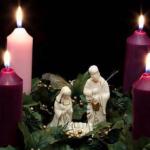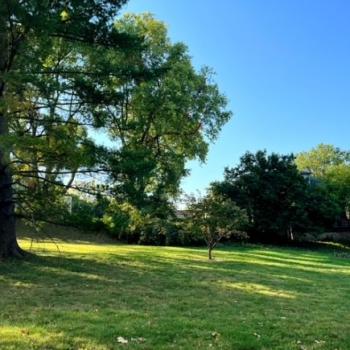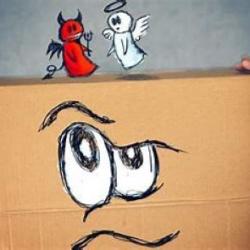Will the REAL Saint Nicholas Please Stand Up?
The Saint Nicholas Society
For my first novel, The Saint Nicholas Society, I researched the legend and the facts of Saint Nicholas of Myra for over five years—checking all information with theologians, historians, and scientists along the way. Here is a small sample of Saint Nicholas that was discovered. If you would like to know more, please order from Amazon, Barnes and Noble, as well as at BenBongers-Author.com or anywhere fine books are sold.
Death and Tragedy
The real Saint Nicholas was born on the Ides of March (March 15th) around 207 A.D. in the then-trading town of Patara, Lycia (now Turkey). We don’t have his parent’s names, but we know they were wealthy and taken from this life due to a plague when Nicholas was young. After the passing of Nicholas’s parents, he was taken in by his father’s brother, a Christian Bishop in the area.
Nicholas accompanied his uncle in secret as an area “overseer” of the fledgling religion known as Christianity in many Mediterranean countries, allowing the young man to visit differing cultures and become well-versed in over nine different languages.
It Came in a Dream
As a young man, Nicholas heard the calling to become a Priest in the outlawed and persecuted religion. He went back to Patara to apprentice with a good and holy priest. After his ordination, some of the first mystical events happened in his young Priestly life. One night, Nicholas had a peculiar dream. He was trying to hear the call of a distant herd of sheep in a deep canyon. He heard his name being called to help shepherd the flock to safety. He got up and decided to go to the city of Myra to discuss the dream with the Bishop there.
The overseeing Bishop in Myra, Lycia (Turkey) had a similar dream on the same evening. He was in Myra to assist in choosing a new Bishop in the area after the Roman Legion had executed the previous Bishop of Myra. The position had been offered to over 10 other men but was turned down by all. In the overseeing Bishop’s dream, he heard a voice tell him, “The next shepherd is to be named Nicholas. He will be the first through the door.”
The following day, the overseeing Bishop spoke with the other Bishops gathered in the local worship building and discussed the dream. They each had a similar dream and concluded it was the voice of the Holy Spirit. The following day, the Priest from Patara named Nicholas entered the building at sunrise. He heard a voice in the still-dark room call out, “Your name! What is your name?” With apprehension, the Priest said, “I am called Nicholas. I come to seek council with the Bishop of Myra.” In a flurry, Nicholas was immediately swarmed by the waiting clergy and told of their dreams. According to legend and a few fragments found, Nicholas became the Bishop of Myra that same day.
Legend of the Three Sisters
As Bishop of Myra, Nicholas was known for wise counsel and a giving soul. A legend soon followed him to Myra of his saving three daughters of a merchant by paying for their dowery. The real story was far darker.
While still in Patara, Nicholas heard that a man had fallen on hard times. He had made some bad investments, and not only did he owe what he didn’t have, but he had put his family up as collateral for the loans. The man had a wife, two sons, and three daughters who were about to be sold into slavery. The sons were scheduled to go to the ships as galley slaves, and the daughters and wife were to be sold into prostitution. Nicholas, having no parents but coming from a well-to-do family, felt compassion for them. He packaged gold and silver coins into leather bags—about the size of a small child’s head—and tossed the coins through a window of the debtor’s house over several nights to pay off the debt. Nicholas knew there would be retribution if it were ever found out he was the donor, so he did it in darkness, never saying he gave the money. On the last night’s donation, he was caught by the man who was about to lose his family. Nicholas convinced the man to never tell of the exploit. However, the man did write the story down and gave it to his wife for safekeeping.
Dungeons, Torture, and Witness
Being a Christian during the time of Diocletian was dangerous, especially if you were in the Church’s hierarchy. As a Bishop, he had a target on his back and lived in secret much of his life. Myra and its neighboring town down the hill toward the sea, Andriake, were strongholds of the Greek goddess Artemis; however, there were temples to Zeus, Apollo, Athena, and Aphrodite. Myra and Andriake were bustling trade cities at the time with timber, mining, and farming from the hill country to the north and the sea’s fishing, trade, and transport to the south. In secret, Nicholas would assist the people in need with collected money, clothing, or food. He was known to assist in healing with herbs and saves and never asked for payment—only anonymity.
Soon, the Romans noticed the growing Christian population and came looking for the cause of the drop in faithful subjects to the gods. Nicholas and many of his fellow Bishops were picked up by the Roman guard and taken to the dungeons for questioning, torture, and, in many cases, death. The punishments were brutal and unrelenting. Scourging with the cat of nine tails (a leather thong whip with bits of glass or iron at the end to tear flesh as it hit) was a favorite weapon. After the victim was scourged, salty sea water or vinegar would be poured over the victim, many times rendering them unconscious from pain. The incarcerated Bishops and Priests would be put on the rack and stretched until their ligaments, bones, and muscles would be torn apart. Parts of their bodies would flay or cut away—in effect, skinning them alive. Or different body parts would be put on a grid-like iron surface, then put over an open fire for them to be simmered, one section at a time—either charring the flesh or melting body parts together. The left eye was often removed, or the right tendon on the back of the right heel was cut to maim the clergyman permanently. All the while being asked who the head of their religion was or who its supporters were.
Proof of Torture and Witness
Nicholas was incarcerated and questioned at least two different times, possibly more. The reason we know of his torture and the lasting effects came from a restoration project of his tomb in Bari, Italy, from 1953 to 1957. Scientists led by Luigi Martino studied the ancient saint’s remains. After researching the skeleton and taking thousands of high-resolution photographs, they noticed that Saint Nicholas’s bones had been broken and rebroken several times, consistently with the day’s tortures. His spine had scaring consistent with strokes from cat-of-nine tails. His nose had been broken so many times that there was no solid structure left. And his eye sockets had been cracked and broken, moving his left eye slightly lower and inward (consistent with multiple blows from a right-handed assailant).
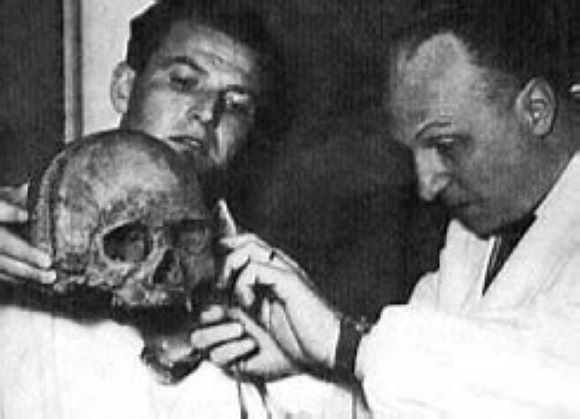
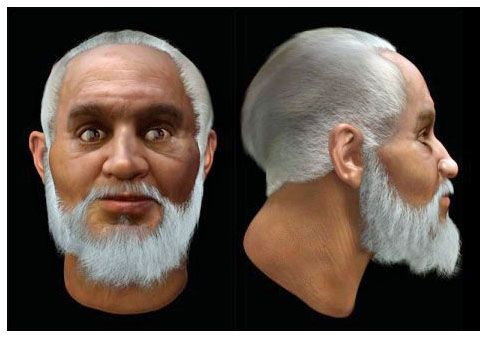
Christianity and Constantine
Later, in 325 A.D., after Constantine had legalized Christianity (in 311 A.D.), he called for a council of Bishops to gather and discuss issues of the growing religion in the lakeside town of Nicaea (Turkey). Several things on the docket included when Easter should be celebrated (until then, every diocese celebrated on a different calendar date), a unifying statement of who and what we believe (a Creed), and a discussion of a specific possible heresy put forward by a Priest named Arius Known as Arianism (find out more at Arianism – Wikipedia). The date Easter would be celebrated was agreed upon, the now-known Nicaean Creed was written, and Arius was expelled with two Bishops who backed him in his heresy. Constantine, notorious for wanting unanimity in all decisions, asked Nicholas to correspond with Arius and try to convince him to recapitulate and agree that he was speaking heresy. At the closing session of the Council of Nicaea, Constantine came to the floor of the meeting and asked all of the bishops present to join him. He officially and, in a heartfelt way, apologized for the wrongs of Rome in their persecution, calling them “living witnesses (martyrs) to the Lord and God.”
Fighting for the Faith—Fact or Fiction?
Although Nicholas’s signature was not found on any of the documents from Nicaea, we know he was there from the writings of Eusebius and others who were chronicling the event. One legend from the council was Nicholas, who, being staunchly against Arius’s idea, walked up to Arius and punched him in the face! Today, scholars find this more legend than truth because of the close connection between Nicholas and Constantine. Constantine is documented as not only asking Nicholas for advice but also giving Nicholas large sums of money to distribute to the poor, sick, and widowed of his area—thus creating the first Social Security program.
Two or Three Places at Once
Another point in history between Constantine and Nicholas is a mystical point. Saint Nicholas was known to bi-locate, that is, physically be in one place but be seen in another place many miles away simultaneously. One historical story was about three generals who won a decisive battle for the emperor and returned to great accolades. Constantine’s First Minister was jealous of the three and had them imprisoned on trumped-up charges of treason and to be executed for their crime. The three, still pagan, had heard of the mystical Nicholas who lived in Myra and prayed to him for his intercession. Soon, Nicholas came to Constantine, unrelentingly in his dreams. After ten days of dreams, Constantine asked to see the three generals. They explained what they had been doing—praying to Bishop Nicholas—and their actions (and Constantine’s dreams) coincided. After looking into the matter, Constantine found his First Minister to be a jealous liar and quickly executed him instead.
Will the Real Saint Nicholas Please Stand Up?
This was not the only time the aging and slowing Nicholas was known to bi-locate. He was seen many more times at the bedside of the dying, on ships during storms, steering the boat away from a rocky shore, and telling fishermen where to cast their nets for the best catch.
The Holy Scrapper
Even though Christianity was now recognized in the empire, it didn’t mean it was always accepted. The cults of the goddesses Artemis and Aphrodite were bitter over the decision to make Christianity legal and be forced to live by the morals of this upstart religion. Nicholas was a marked troublemaker as far as their followers were concerned and had a bounty on his head. One of the major sticking points was fornication with a “temple virgin” (temple prostitute) was now considered immoral. Another issue was young girls and boys being sold into slavery for prostitution—many of whom went to the temples— was now to be considered taboo. This was Nicholas’s direct effect on the city fathers. In more than one confrontation, Nicholas won over the crowd and explained that the better way to live one’s life was moral.
The Ongoing Legend
There are many, many more stories, legends, and contributions to Saint Nicholas. By his death on December 6, 343 A.D., he was known to be a holy man and, within five years, was declared by the Christian world to be a Saint. In 800, more churches were dedicated to Saint Nicholas than any other Saint—except Saint Mary.
So, on this Feast Day of Saint Nicholas of Myra (December 6th), while you are enjoying some chocolate coins or other treats from a stocking by the chimney, say a quick “Hello” and thank you for his help, his witness, but most of all, for showing the world what a true Christian is. To show his enduring influence, the following are areas of life where Saint Nicholas is considered a Patron Saint:
Beer & Wine Creators
- Barrel Makers
- Bottlers
- Brewers
- Vintners
- Wine Merchants
Business
- Bankers
- Businessmen
- Clerks
- Farmers
- Fishermen
- Grain Merchants
- Grocers
- Haberdashers
- Hostellers
- Innkeepers
- Linen Merchants
- Merchants
- Oil Merchants
- Pawnbrokers
- Peddlers
- Perfumeries
- Seed Merchants
- Shop Keepers
- Spice Merchants
- Timber Merchants
Church
- Altar Servers
- Choir Boys
- Clergy
- Parish Clerks
- Pilgrims
- Preachers
Craftsmen
- Bakers
- Boot Blacks
- Butchers
- Button Makers
- Candle Makers
- Chair Makers
- Cloth Shearers
- Coopers
- Drapers
- Embalmers
- Florists
- Lace Makers
- Lumberjacks
- Millers
- Murano Glass Makers
- Perfumers
- Poets
- Ribbon Weavers
- Stone Masons
- Tanners
- Tape Weavers
- Toy Makers
- Weavers
- Wood Turners
Education
- Educators
- Pupils
- Scholars
- School Children
- Students
- Teachers
Justice & Public Service
- Captives
- Court Recorders
- Court Filers
- Falsely Accused
- Fire Fighters
- Judges
- Lawyers
- Lawsuit (loss unjustly)
- Murderers
- Notaries
- Potential Thieves
- Pirates
- Prisoners
- Robbers
- Thieves
Medical
- Apothecaries
- Druggists
Military
- Archers
- Military Intelligence
- Soldiers
States in Life
- Brides
- Children
- Boys
- Grooms
- Infants
- Lovers
- Maidens
- Newlyweds
- Old Maids
- Orphans
- Paupers
- Poor People
- Prostitutes
- Sinners
- Spinsters
- Travelers
- Unmarried Men
- Unmarried Women
- Virgins
- Women
Water & Shipping
- Bargemen
- Boatmen
- Chandlers (Ship Suppliers)
- Dock Workers
- Ferrymen
- Longshoremen
- Mariners
- Navigators
- Packers
- Sailors
- Sealers
- Shore Men
- Ship Owners
- Shipwrights
- Ship Carpenters
- Shoemakers
- Shoe Shiners
- Skippers


